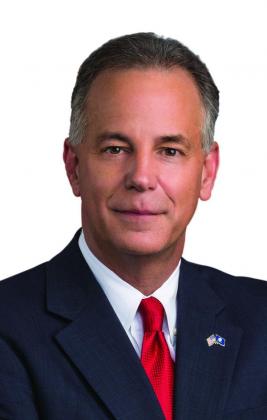
Our nation’s energy story is one of innovation, growth, and determination, and nowhere is it more evident than in my home state of Louisiana. Today, offshore energy production occurs on less than one percent of our nation’s outer Continental Shelf, but is responsible for 16 percent of U.S. oil production, three percent of U.S. natural gas production, and billions of dollars in revenue that annually flows into rebuilding our coastline and improving our state and local parks.
This story often gets lost with those who fundamentally disagree with resource extraction and who would prefer to “Keep it in the Ground.” But that does not work for the tens of thousands of pipefitters, welders, roughnecks, and vessel operators employed in the energy industry. These men and women are proud to deliver affordable, American-made energy to families and businesses throughout the nation.
The Trump Administration is dedicated to excellence in offshore safety. We launched an additional inspection protocol to stay ahead of potential issues. This risk-based approach uses data analysis to focus inspections on targeted operations and facilities. We are using technology to review testing records onshore allowing for a 6.1 percent increase in physical inspection time of equipment on offshore rigs and platforms, and drastically increased participation in a near-miss reporting program.
The number of offshore inspections has consistently increased under President Trump. In calendar year 2016, BSEE conducted 8,508 inspections. That number jumped to 9,275 and 10,341 in 2017 and 2018 respectively.
Our nation’s regulatory system is meant to protect our workforce and drive safe practices. It is not a tool to stop American energy production. That is why last April, President Trump signed Executive Order 13795, “Implementing an America-First Offshore Energy Strategy,” which directed the Secretary of the Interior to review the previous administration’s “Oil and Gas and Sulfur Operations in the Outer Continental Shelf-Blowout Preventer Systems and Well Control,” also known as the Well Control Rule.
Riddled with issues and controversy and provisions that many believed would make development less safe, the original regulation required an entire webpage to answer over 100 complex engineering questions to explain how the rule was supposed to work. It was one of several new regulations on offshore energy development and rushed out the door in 2016 to avoid triggering the Congressional Review Act — an important tool employed by Congress to overturn regulatory overreach.
This month, we have put forward a safe, smart, and improved rule. Of the 342 provisions in the previous administration’s Well Control Rule, only 68 provisions were revised, leaving roughly 80 percent of the original rule untouched. Our improvements add an additional 33 provisions to bolster safety, such as ensuring availability of properly maintained well intervention tools and testing of the blowout preventer blind shear rams.
Moreover, technical experts from the Bureau of Safety and Environmental Enforcement (BSEE) combed through 424 recommendations from 26 separate reports from 14 different organizations following Deepwater Horizon and found that none of the revisions contravened any of these recommendations.
The rule published May 15 in the Federal Register employs a performance-based approach to meet real-time monitoring requirements, removes duplicative certification requirements that add no value, reduces blowout preventer failure risks, and improves the expected lifespan of critical blowout preventer components.
This revised regulation also addresses a troubling outcome of the original rule: the high propensity and significant need for alternate compliance. Alternate compliance, a provision that dates back to 1988, is a tool offshore operators utilize to implement safety and environmental protection alternatives that BSEE deems as safe as — or more safe than — current requirements. There were troves of incoming requests to deviate from the rule in order to ensure the safety of hardworking crews offshore. Under the previous administration, the rate of alternate procedures or equipment approvals per permit was twice as high and the rate of alternate procedures or equipment approvals per day was 79 percent higher.
Many have perpetuated the false narrative that this Administration is decreasing safety as we work to reduce bureaucratic red tape. This line of thinking ignores the simple fact that there are always different pathways that can achieve and even improve upon the same end result. Our nation’s regulatory framework has room for improvement, and we will continue to make improvements that ensure safety, while also allowing energy security and prosperity to flourish.
The Trump Administration is focused on smart solutions that keep workers safe and allow for energy development and job growth. This final Well Control Rule does just that, and will ensure that our Gulf economy will continue to be a global beacon of innovation, energy security, and environmental stewardship for decades to come.
Scott Angelle is director of the Bureau of Safety and Environmental Enforcement.
